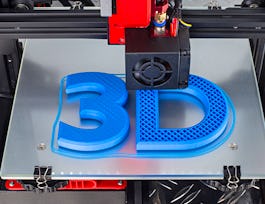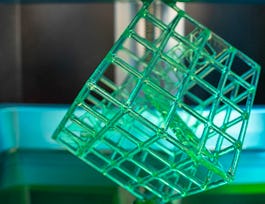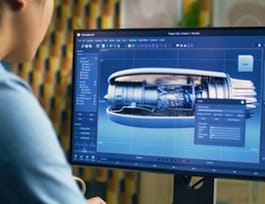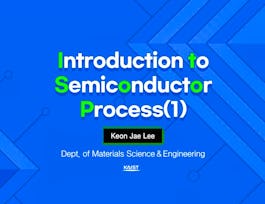How can we create nano-structures that are 10,000 times smaller than the diameter of a human hair? How can we “see” at the nano-scale? Through instruction and lab demonstrations, in this course you will obtain a rich understanding of the capabilities of nanotechnology tools, and how to use this equipment for nano-scale fabrication and characterization. The nanoscale is the next frontier of the Maker culture, where designs become reality. To become a Nanotechnology Maker pioneer, we will introduce you to the practical knowledge, skills, and tools that can turn your nanotechnology ideas into physical form and that enable you to image objects at the nano-scale.



Nanotechnology: A Maker’s Course



Instructors: Nan M. Jokerst
Sponsored by Louisiana Workforce Commission
68,562 already enrolled
(2,987 reviews)
Details to know

Add to your LinkedIn profile
30 assignments
See how employees at top companies are mastering in-demand skills


Earn a career certificate
Add this credential to your LinkedIn profile, resume, or CV
Share it on social media and in your performance review

There are 9 modules in this course
Welcome to Nanotechnology! In this module, you will learn some of the basics of nanofabrication and nanocharacterization techniques as well as specific applications of nanotechnology in commercial products. You’ll be able to explain why a cleanroom and vacuum environment are necessary for creating nanotechnology products. Finally, you will be able to explain how we use light, x-rays, and electron beams to characterize objects at the nanoscale. For more detailed learning objectives for each video, please see the first reading.
What's included
10 videos3 readings3 assignments
After this module, you will be able to explain sample preparation and imaging techniques used in scanning electron microscopy. You will also be able to explain the benefits of environmental scanning electron microscopy. Furthermore, you will discover how energy-dispersive x-ray spectroscopy can be paired with scanning electron microscopy to gain elemental information about samples.
What's included
8 videos3 readings3 assignments
In this module, we will look at transmission electron microscopy and cryo-transmission electron microscopy. You will learn to describe the basic function of the equipment as well as how samples are prepared and imaged using these techniques.
What's included
7 videos3 readings3 assignments
In this module, we will see demonstrations of micro-computed tomography, X-ray photoelectron spectroscopy, and optical spectroscopy. You will learn the basic function of the equipment and how samples are prepared and measured.
What's included
11 videos4 readings4 assignments
In this module, we will discover how and why a vacuum environment is required in nanofabrication, compare the operation of three types of vacuum pumps, and look at vacuum deposition of thin films using three different methods: sputter evaporation, e-beam evaporation and thermal evaporation.
What's included
11 videos3 readings3 assignments
We will look at some techniques for making things with nanotechnology using thin film techniques; in this module you will learn to describe and compare atomic layer deposition, chemical vapor deposition, and plasma-enhanced chemical vapor deposition.
What's included
8 videos4 readings4 assignments
In this module, we will investigate 5 different methods used in nanotechnology for patterning. You will be able to explain the basic processes of photolithography, e-beam lithography, ion beam lithography, hot embossing, and self-assembly.
What's included
11 videos6 readings6 assignments
In this module, you will learn to describe and compare wet and dry etching processes. These processes are used to selectively remove material in nanofabrication.
What's included
7 videos4 readings4 assignments
What's included
1 video
Instructors



Why people choose Coursera for their career




Learner reviews
2,987 reviews
- 5 stars
84.27%
- 4 stars
14.12%
- 3 stars
1.30%
- 2 stars
0.16%
- 1 star
0.13%
Showing 3 of 2987
Reviewed on Apr 10, 2020
Its a really nice informative course. But Etching was really boring part and difficult to understand compared to other parts of the module. If that can be made more friendly it would be great.
Reviewed on Feb 18, 2022
English language training to know quantum motion and quantum energies I also enjoyed the team of doctors as they are friendly and helpful and it is easy to receive information ...thanks..
Reviewed on Aug 22, 2020
Hello everyone,
Recommended if you're interested in Physical Science and Engineering

University of Michigan

Arizona State University

Arizona State University

Korea Advanced Institute of Science and Technology(KAIST)

Open new doors with Coursera Plus
Unlimited access to 10,000+ world-class courses, hands-on projects, and job-ready certificate programs - all included in your subscription
Advance your career with an online degree
Earn a degree from world-class universities - 100% online
Join over 3,400 global companies that choose Coursera for Business
Upskill your employees to excel in the digital economy







